We are now going to see many model of airplanes that are made from the different company
Boeing(USA)
This is a very old company, I will only show you a few newer ones.
B717:
The Boeing 717 is an American five-abreast narrow-body airliner produced by Boeing. The twin-engine airliner was developed for the 100-seat market and originally marketed by MD(McDonnell Douglas) in the early 1990s as the MD until the company merged with Boeing in August 1997. It was a shortened derivative of MD successful airliner, the MD-80, and part of the company's broader DC-9 family. Capable of seating up to 134 passengers, the 717 has a design range of 3,820 km.
General information:- Capacity: 100-120
- Length: 37.8m
- Width: 28.47m
- Largest weight: 49.9 - 59.9 tons
- Continuation: 2645 - 3815 km
- Previous name: MD-95
- Number build: 156
- Production status: Already stopped; some of them still in service.
- Level: Narrow-body small-sized passenger aircraft
- Model: 2 types
B737:
The Boeing 737 is an American narrow-body aircraft produced by Boeing at its Renton factory in Washington. Developed to supplement the Boeing 727 on short and thin routes, the twinjet retained the 707 fuselage width and six abreast seating but with two underwing Pratt & Whitney JT8D low-bypass turbofan engines. 737 offers several variants for 85 to 215 passengers.
General information:
- Capacity: 85 - 215
- Length: 28.6 - 43.79m
- Width: 28.3 - 35.92m
- Largest weight: 49.19 - 88.314 tons
- Continuation: 3440 - 10205 km
- Number build: 12,171 (till 2025)
- Production status: In production.
- Level: Narrow-body medium-sized passenger aircraft
- Model: 13 types
B747:
The Boeing 747 is a long-range wide-body airliner designed and manufactured by Boeing Commercial Airplanes in the United States between 1968 and 2023. After the introduction of the 707 in October 1958, Pan Am wanted a jet 2+1⁄2 times its size, to reduce its seat cost by 30%. In 1965, Joe Sutter left the 737 development program to design the 747.
General information:- Capacity: 331 - 581
- Length: 56 - 76.4m
- Width: 59.6 - 68.5m
- Largest weight: 304 - 489.985 tons
- Continuation: 9800 - 15000 km
- Number build: 1574
- Production status: already stopped, only a few still in service
- Level: Wide-body giant-sized passenger aircraft
- Model: 8 types
B757:
The Boeing 757 is an American narrow-body airliner designed and built by Boeing Commercial Airplanes. The then-named 7N7, a twinjet successor for the trijet 727, received its first orders in August 1978. The prototype completed its maiden flight on February 19, 1982. Eastern Air Lines placed the initial 757-200 variant in commercial service on January 1, 1983. The stretched 757-300 was launched in September 1996 and began service in March 1999. After 1,050 had been built for 54 customers, production ended in October 2004.
General information:- Capacity: 200 - 280
- Length: 47.32 - 54.41m
- Width: 38.05m
- Largest weight: 115.65 - 122.47 tons
- Continuation: 5834 - 7275 km
- Number build: 1050
- Production status: already stopped, still in service
- Level: Narrow-body large-sized passenger aircraft.
- Model: 2 types
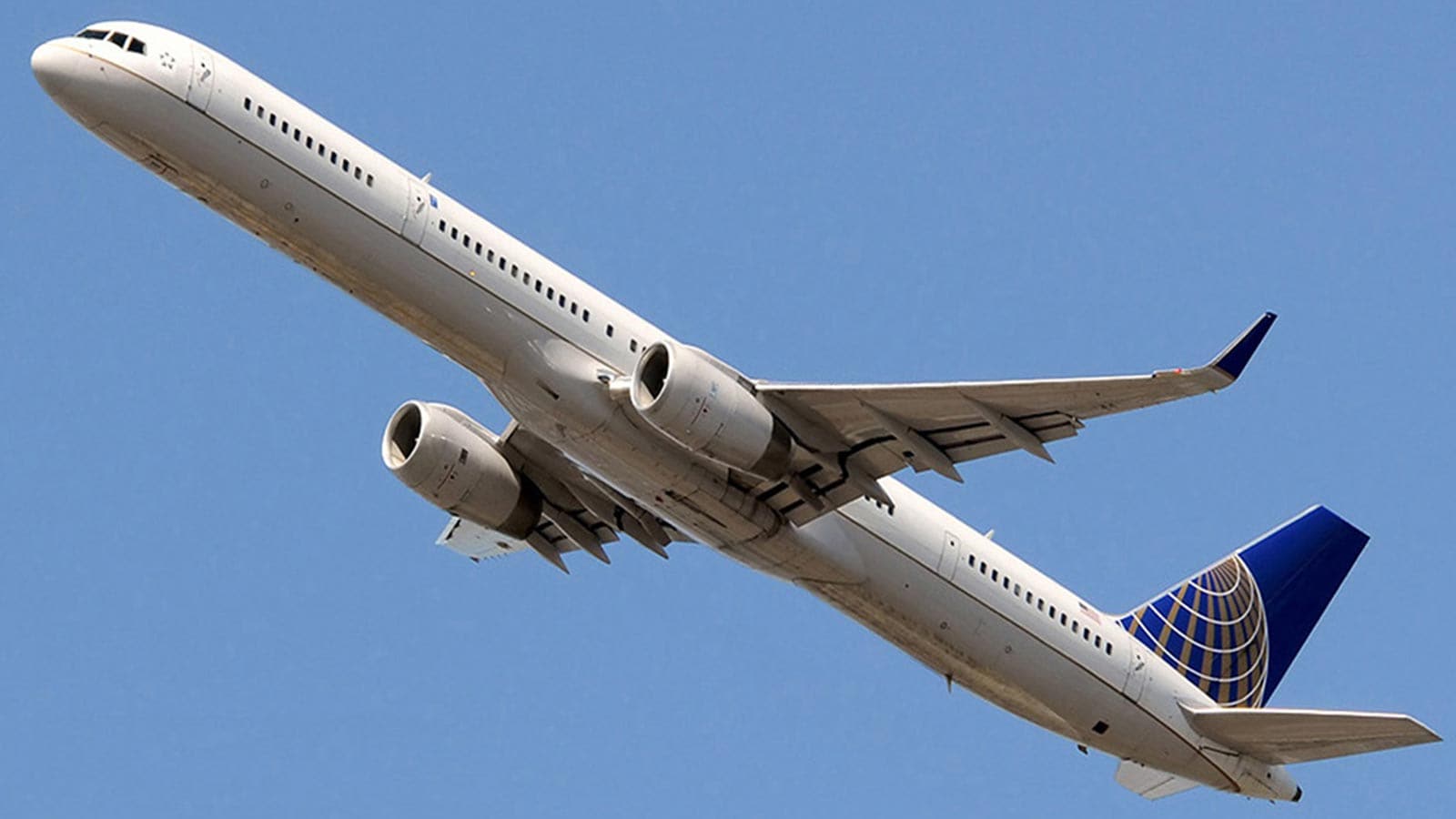
B767:
The Boeing 767 is an American wide-body airliner developed and manufactured by Boeing Commercial Airplanes. The initial 767-200 variant entered service on September 8, 1982, with United Airlines, and the extended-range 767-200ER in 1984. It was stretched into the 767-300 in October 1986, followed by the extended-range 767-300ER in 1988, the most popular variant. The 767-300F, a production freighter version, debuted in October 1995. It was stretched again into the 767-400ER from September 2000.
General information:- Capacity: 181 - 375
- Length: 48.5 - 61.4m
- Width: 47.57 - 51.82m
- Largest weight: 142.88 - 204.12 tons
- Continuation: 6025 - 12200 km
- Number build: 1176(till 2019)
- Production status: Cargo in production, but passengers stopped, mostly in service
- Level: Wide-body small and medium-sized passenger aircraft.
- Model: 3 types

B777:
The Boeing 777, is an American long-range wide-body airliner developed and manufactured by Boeing Commercial Airplanes. The 777 is the world's largest twinjet and the most-built wide-body airliner. The jetliner was designed to bridge the gap between Boeing's other wide body airplanes, the twin-engined 767 and quad-engined 747, and to replace aging DC-10 and L-1011 trijets. Over 2300 Boeing 777 aircraft have been ordered, with over 70 operators worldwide.
General information:- Capacity: 305 - 550
- Length: 63.73 - 73.86m
- Width: 60.93 - 64.8m
- Largest weight: 247 - 352 tons
- Continuation: 9200 - 15844 km
- Number build: 1734(till 2024)
- Production Status: In production.
- Level: Wide-body large-sized passenger aircraft.
- Model: 4 types

B787:
The Boeing 787 Dreamliner is an American wide-body airliner developed and manufactured by Boeing Commercial Airplanes. Boeing announced the conventional 7E7 on January 29, 2003, which focused largely on efficiency. Subsequently the aircraft experienced multiple delays, until its maiden flight on December 15, 2009. Type certification was received in August 2011, and the first 787-8 was delivered in September 2011 and entered commercial service on October 26, 2011, with ANA.
General information:- Capacity: 240 - 460
- Length: 57 - 68m
- Width: 60m
- Largest weight: 227.93 - 254.7 tons
- Continuation: 11730 - 14010 km
- Number build: 1206(till 2025)
- Production Status: In production
- Level: Wide-body medium-sized passenger aircraft.
- Model: 3 types
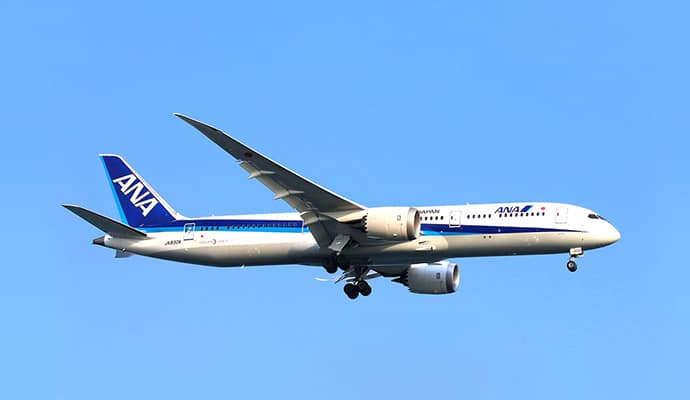
Airbus(Europe)
A300:
The Airbus A300 is Airbus' first production aircraft and the world's first twin-engine, double-aisle (wide-body) airliner. Manufactured from 1971 to 2007. The French and West Germans reached a firm agreement on 29 May 1969, after the British withdrew from the project on 10 April 1969. A new collaborative aerospace company, Airbus Industrie GIE, was formally created on 18 December 1970 to develop and produce it. The A300 prototype first flew on 28 October 1972.
General information:- Capacity: 259 - 345
- Length: 50 - 55m
- Width: 44.8m
- Largest weight: 165 - 171.7 tons
- Continuation: 4850 - 7540 km
- Number build: 561
- Production Status: Stopped, only Iran air and cargo in service
- Level: Wide-body small and medium-sized passenger aircraft.
- Model: 4 types

A310:
The Airbus A310 is a wide-body airliner designed and manufactured by Airbus Industrie GIE, then a consortium of European aerospace manufacturers. Airbus had identified a demand for an aircraft smaller than the A300, the first twin-jet wide-body. On 7 July 1978, the A310 was launched with orders from Swissair and Lufthansa. On 3 April 1982, the first prototype conducted its maiden flight, and the A310 received its type certificate on 11 March 1983.
General information:- Capacity: 240 - 280
- Length: 46.7m
- Width: 43.9m
- Largest weight: 141.974 - 164 tons
- Continuation: 5550 - 8050 km
- Number build: 255
- Production Status: Stopped, only a few in service
- Level: Wide-body small-sized passenger aircraft.
- Model: 2 types

A320 Families:
It is the one of the most airplane model in the world, the total number built is 12151, A320 has 4 types: A318, A319, A320, A321, also included NEO model, the Production Status is CEO plane is stopped, but in service, and NEO plane is in production.
A318:
The Airbus A318, nicknamed the "Baby Bus", is the smallest and least numerous variant airliner of the Airbus A320 family. The A318 carries 107 to 132 passengers and has a maximum range of 5,750 kilometres (3,100 nautical miles; 3,570 miles). Final assembly of the aircraft took place in Hamburg, Germany. It is intended primarily for short-range service.
General information:- Capacity:107 - 132
- Length: 31m
- Width: 34m
- Largest weight: 59 - 68 tons
- Continuation: 2750 - 6000 km
- Number build: 80
- Production Status: Stopped, very few in service
- Level: Narrow-body small-sized passenger aircraft.

A319:
The Airbus A319 is a member of the Airbus A320 family of short- to medium-range, narrow-body, commercial passenger twin-engine jet airliners manufactured by Airbus. The A319 carries 124 to 156 passengers and has a maximum range of 6,900 km. Final assembly of the aircraft takes place in Hamburg, Germany and Tianjin, China.
General information:- Capacity: 124 - 156
- Length: 33.84m
- Width: 35.8m
- Largest weight: 75.5 tons
- Continuation: 6940 km
- Number build: 1516
- Production status: In service
- Level: Narrow-body small-sized passenger aircraft.
- Model: 2
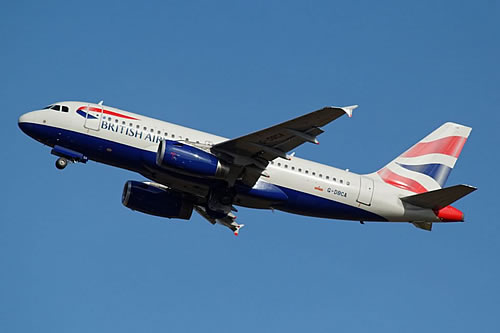
A320:
The Airbus A320 is a series of narrow-body airliners developed and produced by Airbus. The A320 was introduced in April 1988 by Air France, the first member of the family. In December 2010, Airbus announced the re-engined A320neo (new engine option), which entered service with Lufthansa in January 2016. With more efficient turbofans and improvements including sharklets, it offers up to 15% better fuel economy. The previous A320 generation is now called A320ceo (current engine option).
General information:- Capacity: 150 - 186
- Length: 37.57m
- Width: 35.8m
- Largest weight: 78 tons
- Continuation: 6200 km
- Number build: 4752
- Production status: stopped, in service, NEO still in production
- Level: Narrow-body small and medium-sized passenger aircraft.
- Model: 2
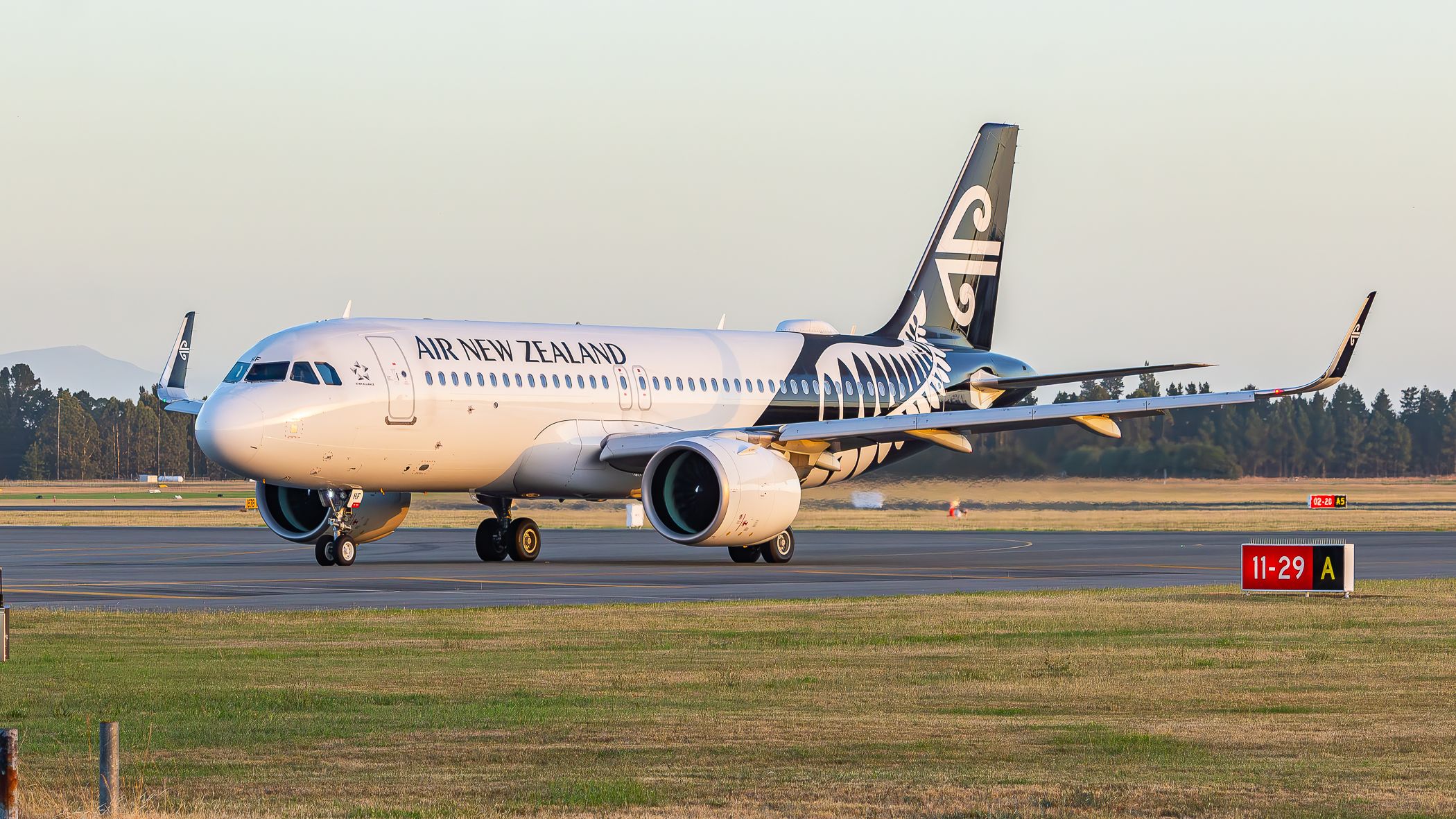
A321:
The Airbus A321 is a member of the Airbus A320 family of short to medium range, narrow-body, commercial passenger twin engine jet airliners; it carries 185 to 239 passengers. It has a stretched fuselage which was the first derivative of the baseline A320 and entered service in 1994, about six years after the original A320. The aircraft shares a common type rating with all other Airbus A320-family variants, allowing A320-family pilots to fly the aircraft without the need for further training.
General information:- Capacity: 185 - 220
- Length: 44.51m
- Width: 35.8m
- Largest weight: 93.5 tons
- Continuation: 5930 km
- Number build: 3571
- Production status: Stopped, in service, NEO, LR, XLR in production
- Level: Narrow-body large-sized passenger aircraft.
- Model: 2
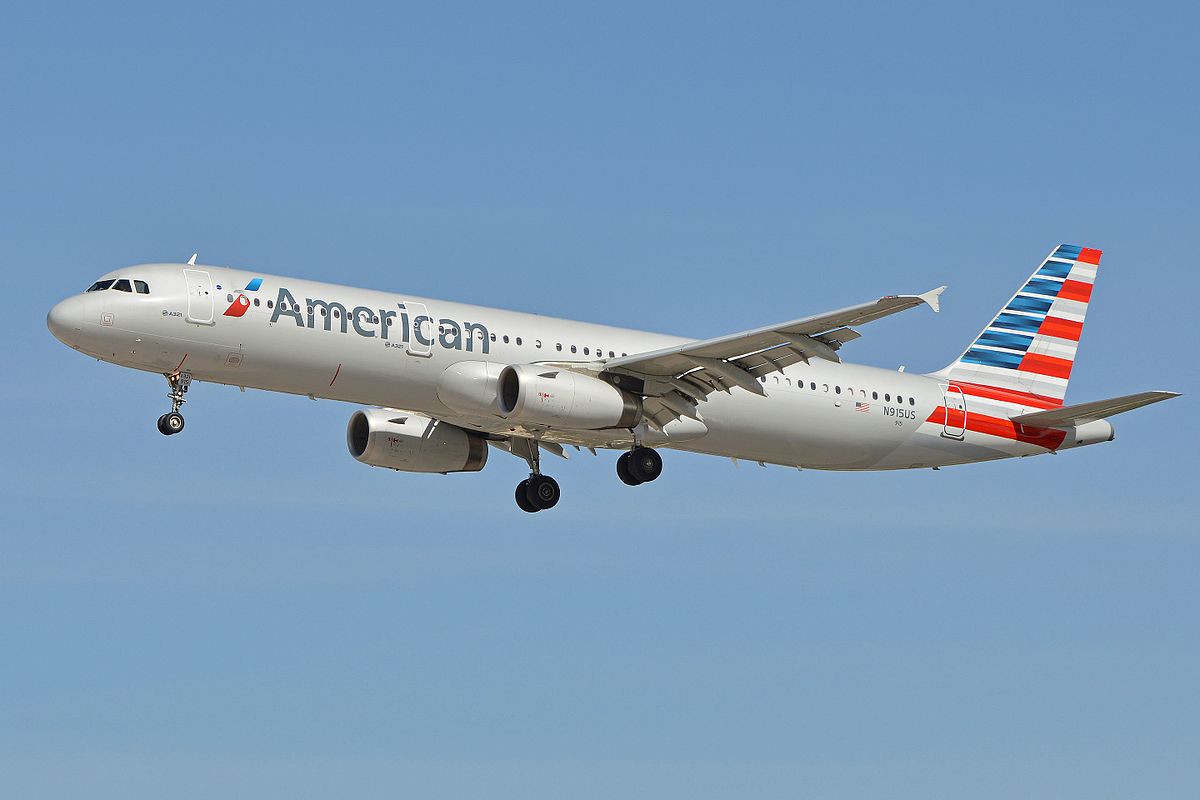
A320 NEO family:
General information:
- Capacity: 140 - 240
- Length: 33.84 - 44.51m
- Width: 35.8m
- Largest weight: 75.5 - 101 tons
- Continuation: 6760 - 8700 km
- Number build: 4051
- Production status: in production
A330:
The Airbus A330 is a wide-body airliner developed and produced by Airbus. Airbus began developing larger A300 derivatives in the mid–1970s, giving rise to the A330 twinjet as well as the Airbus A340 quadjet, and launched both designs along with their first orders in June 1987. The A330-300, the first variant, took its maiden flight in November 1992 and entered service with Air Inter in January 1994. The A330-200, a shortened longer-range variant, followed in 1998 with Canada 3000 as the launch operator.
General information:- Capacity: 253 - 440
- Length: 58.82 - 63.69m
- Width: 60.3 - 64m
- Largest weight: 199 - 251 tons
- Continuation: 5000 - 13900 km
- Number build: 1637(till 2025)
- Production status: CEO Stopped, NEO in Productions, most of them in service
- Level: Wide-body Medium-sized passenger aircraft.
- Model: 4

A340:
Airbus A340 is a long-range, wide-body passenger airliner that was developed and produced by Airbus. In the mid-1970s, Airbus conceived several derivatives of the A300, its first airliner, and developed the A340 quadjet in parallel with the A330 twinjet. In June 1987, Airbus launched both designs with their first orders and the A340-300 took its maiden flight on 25 October 1991. It both entered service in March 1993 with launch customers Lufthansa and Air France.
General information:- Capacity: 240 - 380
- Length: 59.39 - 75.3m
- Width: 60.3 - 63.5m
- Largest weight: 275 - 380 tons
- Continuation: 13700 - 16700 km
- Number build: 377
- Production status: Stopped, some of them in service
- Level: Wide-body large-sized passenger aircraft.
- Model: 4
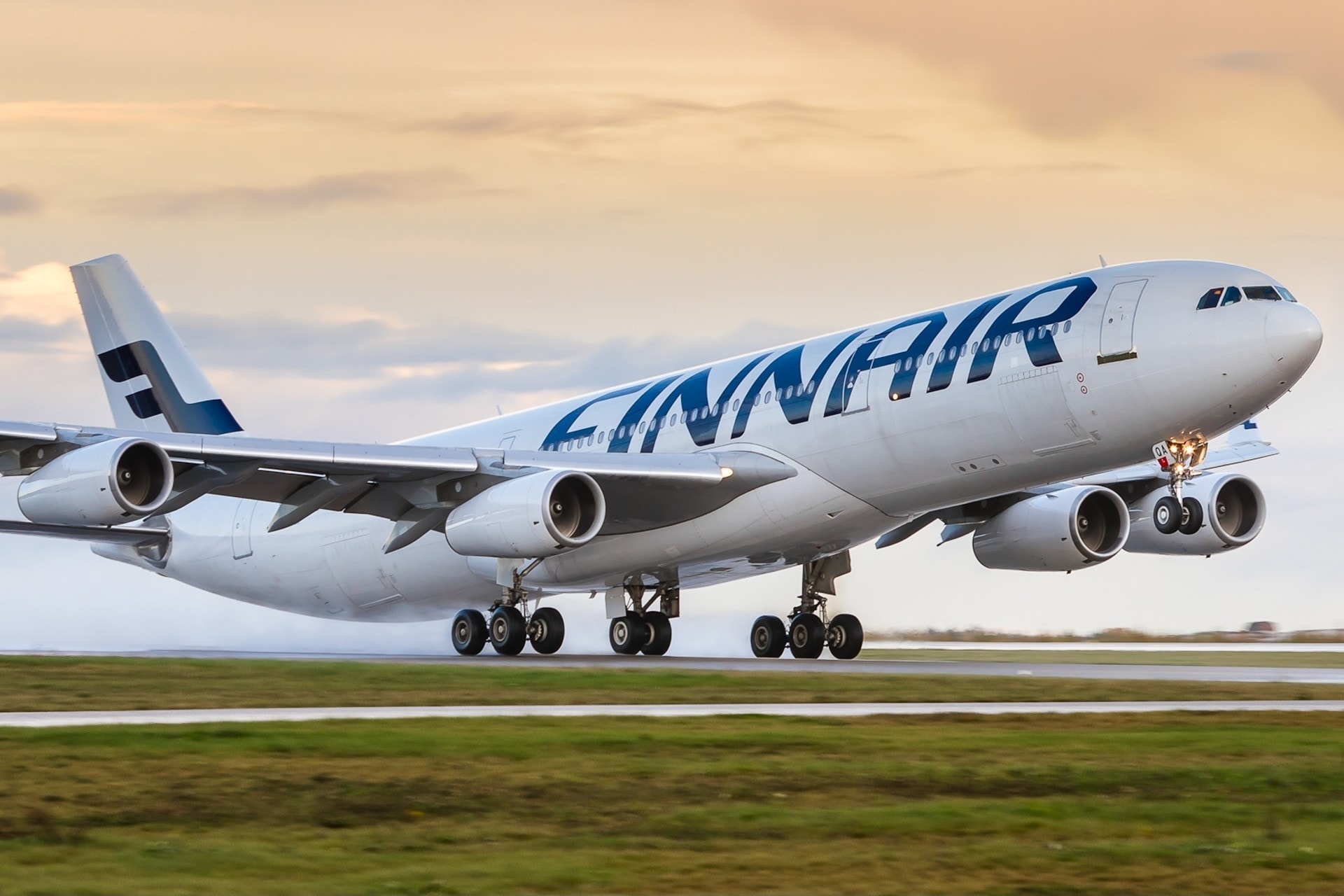
A350:
The Airbus A350 is a long-range, wide-body twin-engine airliner developed and produced by Airbus. The initial A350 design proposed in 2004, in response to the Boeing 787 Dreamliner, would have been a development of the Airbus A330 with composite wings, advanced winglets, and new efficient engines. Due to inadequate market support, Airbus switched in 2006 to a clean-sheet "XWB" (eXtra Wide Body) design, powered by two Rolls-Royce Trent XWB high bypass turbofan engines. The prototype first flew on 14 June 2013 from Toulouse, France.
General information:- Capacity: 314 - 412
- Length: 66.8 - 73.79m
- Width: 64.75m
- Largest weight: 283 - 322 tons
- Continuation: 8700 - 20550 km
- Number build: 669(till 2025)
- Production status: In production
- Level: Wide-body large-sized passenger aircraft.
- Model: 3
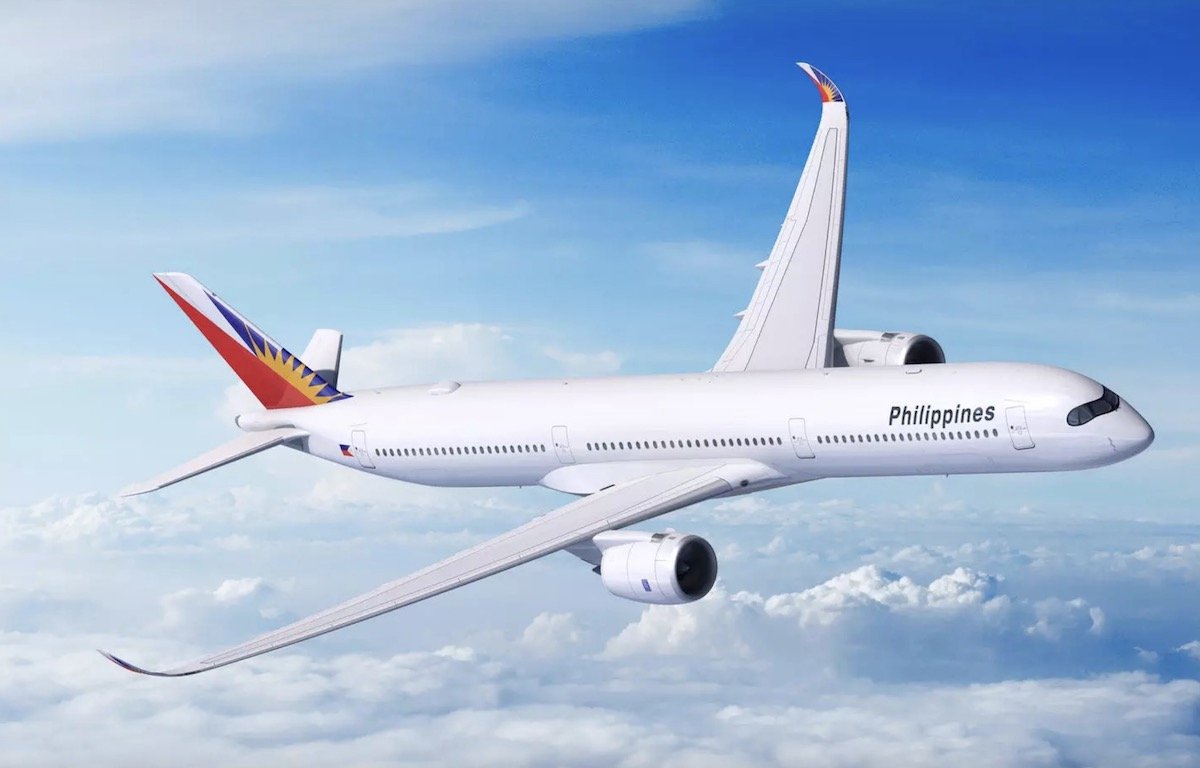
A380:
The Airbus A380 is a very large wide-body airliner, developed and produced by Airbus until 2021. It is the world's largest passenger airliner and the only full-length double-deck jet airliner. Airbus studies started in 1988, and the project was announced in 1990 to challenge the dominance of the Boeing 747 in the long-haul market.
General information:- Capacity: 550 - 853
- Length: 72.72m
- Width: 79.75m
- Largest weight: 570 tons
- Continuation: 15000 km
- Number build: 254
- Production status: stopped, in service
- Level: Wide-body giant-sized passenger aircraft.

A220:
The Airbus A220 is a family of five-abreast narrow-body airliners by Airbus Canada Limited Partnership (ACLP). It was originally developed by Bombardier Aviation and had two years in service as the Bombardier CSeries. The program was launched on 13 July 2008. The smaller A220-100 (formerly CS100) first flew on 16 September 2013, and entered service on 15 July 2016 with launch operator Swiss Global Air Lines. The longer A220-300 (formerly CS300) first flew on 27 February 2015, received an initial type certificate on 11 July 2016, and entered service with airBaltic on 14 December 2016.
General information:- Capacity: 99 - 160
- Length: 35 - 38.7m
- Width: 35.1m
- Largest weight: 67.3 - 70.9 tons
- Continuation: 6300 - 6700 km
- Number build: 435(till 2025)
- Production status: In production
- Level: Narrow body small to medium-sized passenger aircraft.
- Model: 2
- Previous name: Bombardier CSeries
Embraer(Brazil)
Embraer regional jet:
The Embraer ERJ family (for Embraer Regional Jet) are regional jets designed and produced by the Brazilian aerospace company Embraer. The family includes the ERJ 135 (37 passengers), ERJ 140 (44 passengers), and ERJ 145 (50 passengers), as well as the Legacy 600 business jet and the R-99 family of military aircraft.
General information:- Capacity: 37 - 50
- Length: 26.33 - 29.87m
- Width: 20.04m
- Largest weight: 19 - 24.1 tons
- Continuation: 2409 - 3706 km
- Number build: 1231
- Production status: Stopped, in service
- Level: Narrow-body small-sized passenger aircraft.
- Model: 3
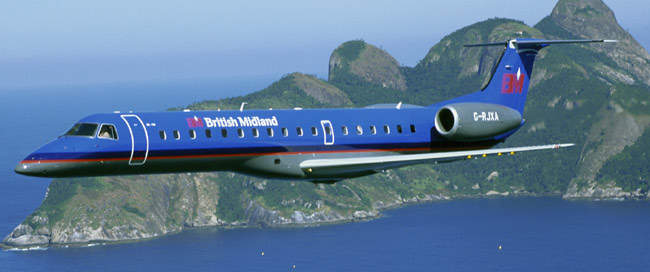
Embraer E-Jet family:
The Embraer E-Jet family is a series of four-abreast, narrow-body, short- to medium-range, twin-engined jet airliners designed and produced by Brazilian aerospace manufacturer Embraer. The E-Jet was designed to complement Embraer’s earlier ERJ family, the company’s first jet-powered regional aircraft. With a capacity of 66 to 124 passengers, the E-Jets were significantly larger than any aircraft Embraer had developed before that time.
General information:- Capacity: 70 - 122
- Length: 29.9 - 38.65m
- Width: 26 - 28.72m
- Largest weight: 35.99 - 52.29 tons
- Continuation: 2593 - 4448 km
- Number build: 1596(till 2021)
- Production status: in production
- Level: Narrow-body small to medium-sized passenger aircraft.
- Model: 4

Embraer E-Jet E2 family:
The Embraer E-Jet E2 family is a series of four-abreast narrow-body airliners designed and produced by the Brazilian aircraft manufacturer Embraer. The twinjet is an incremental development of the original E-Jet family, adopting the more fuel-efficient Pratt & Whitney PW1900G, a geared turbofan engine. The aircraft family comprises three variants that share the same fuselage cross-section with different lengths and feature three different redesigned wings, fly-by-wire controls with new avionics, and an updated cabin. The variants offer maximum take-off weights from 44.6 to 62.5 t, and cover a range of 3,700–5,600 km.
General information:- Capacity: 80 - 146
- Length: 32.4 - 41.5m
- Width: 31 - 35.1m
- Largest weight: 44.8 - 61.5 tons
- Continuation: 3735 - 5280 km
- Number build: 155(till 2025)
- Production status: in production
- Level: Narrow-body small to medium-sized passenger aircraft.
- Model: 3

Others
ATR(Italy/France):
ATR-42:
The ATR 42 is a regional airliner produced by Franco-Italian manufacturer ATR, with final assembly in Toulouse, France. On 4 November 1981, the aircraft was launched with ATR, as a joint venture between French Aérospatiale (now part of Airbus) and Aeritalia (now Leonardo S.p.A.). The ATR 42-300 performed its maiden flight on 16 August 1984.
General information:- Capacity: 42 - 52
- Length: 22.67m
- Width: 24.57m
- Largest weight: 15.55 - 18.6 tons
- Continuation: 850 - 1470 km
- Number build: 484(till 2020)
- Production status: in production
- Level: Narrow-body small-sized passenger aircraft.
- Model: 5
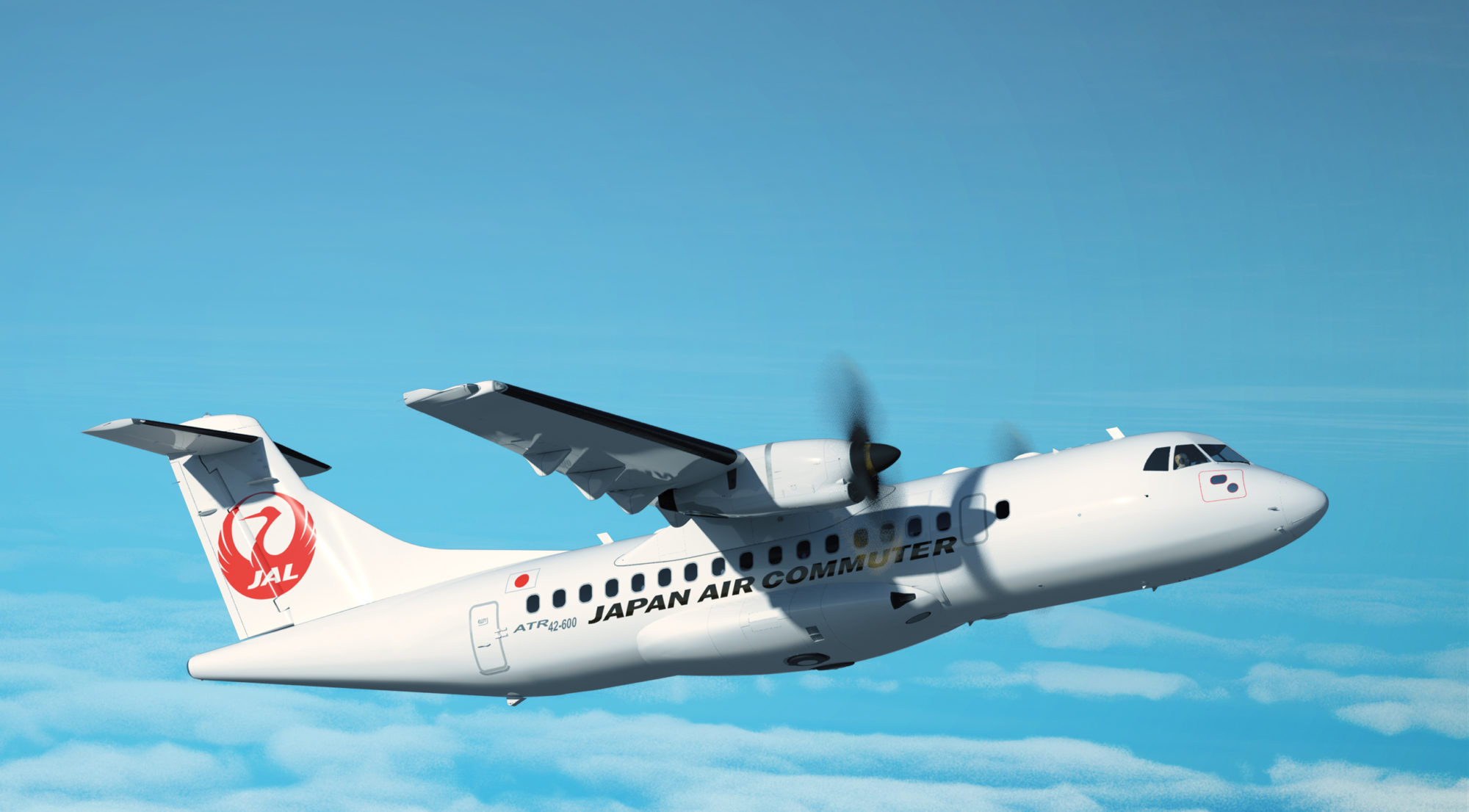
ATR-72:
The ATR 72 is a twin-engine turboprop, short-haul regional airliner developed and produced in France and Italy by aircraft manufacturer ATR. The number "72" in its name is derived from the aircraft's typical standard seating capacity of 72 passengers. The ATR 72 has also been used as a corporate transport, cargo aircraft, and maritime patrol aircraft.
General information:- Capacity: 68 - 74
- Length: 27.17m
- Width: 27.05m
- Largest weight: 22.5 tons
- Continuation: 2414 km
- Number build: 1233(till 2024)
- Production status: in production
- Level: Narrow-body small-sized passenger aircraft.
- Model: 4
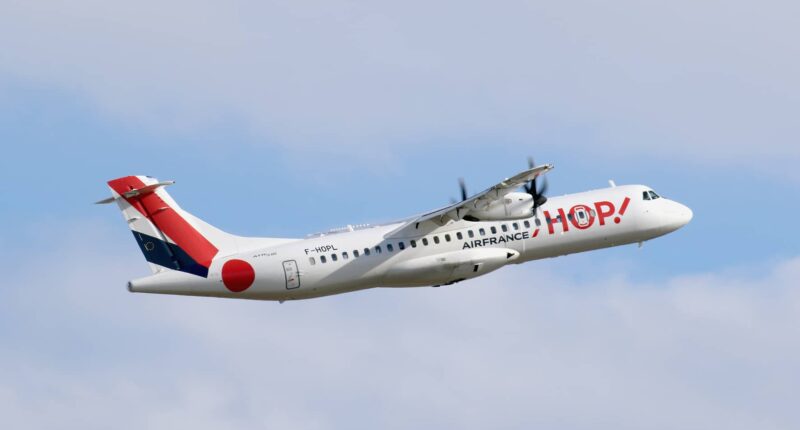
Comac(China):
C-909:
The Comac C909, is a 78–90 seat regional jet manufactured by the Chinese state-owned aerospace company Comac. Development of the ARJ21 began in March 2002, led by the state-owned ACAC consortium. The first prototype was rolled out on 21 December 2007, and made its maiden flight on 28 November 2008 from Shanghai. It received its CAAC Type Certification on 30 December 2014 and was introduced on 28 June 2016 by Chengdu Airlines.
General information:- Capacity: 78 - 105
- Length: 33.46 - 36.35m
- Width: 27.28m
- Largest weight: 40.5 - 47.182 tons
- Continuation: 2227 - 3500 km
- Number build: 156(till 2025)
- Production status: in production
- Level: Narrow-body small-sized passenger aircraft.
- Model:2
C-919:
The Comac C919 is a narrow-body airliner developed by Chinese aircraft manufacturer Comac. The development program was launched in 2008. Production began in December 2011, with the first prototype being rolled out on 2 November 2015; the maiden flight took place on 5 May 2017. On 29 September 2022 the C919 received its CAAC type certificate. The first production airframe was delivered to China Eastern Airlines on 9 December 2022 and was put into commercial passenger service on 28 May 2023.
General information:- Capacity: 158 - 174
- Length: 38.9m
- Width: 33.6m
- Largest weight: 75.1 - 78.9 tons
- Continuation: 2629 - 3922 km
- Number build: 20(till 2025)
- Production status: in production, under development
- Level: narrow-body small to medium-sized passenger aircraft.
- Model: 2
Under development aircrafts: C-929, C-939.
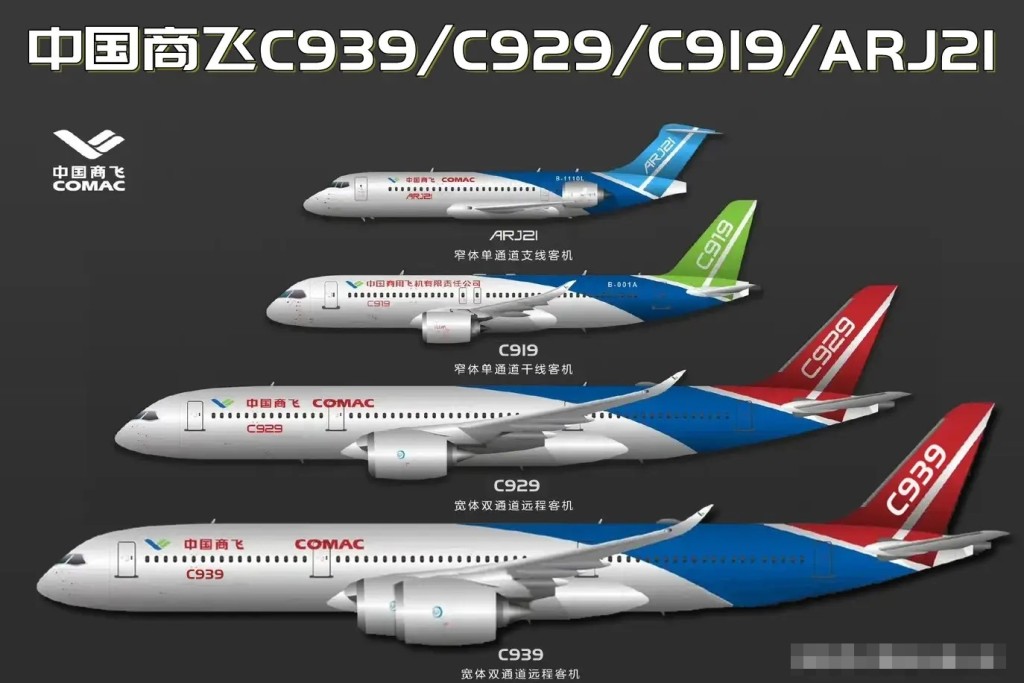
Ilyushin(Russia):
Il-62:
The Ilyushin Il-62 is a Soviet long-range narrow-body jetliner conceived in 1960 by Ilyushin. As a successor to the popular turboprop Il-18 and with capacity for almost 200 passengers and crew, the Il-62 was the world's largest jet airliner when first flown in 1963. The seventh quad-engined, long-range jet airliner to fly.
General information:- Capacity: 168 - 186
- Number build: 292
- Production status: stopped, in service
- Length: 53.1m
- Width: 43.2m
- Largest weight: 165 tons
- Continuation: 10000 km
- Level: Narrow-body large-sized passenger aircraft.
- Model: 3

Il-86:
The Ilyushin Il-86 is a retired short- to medium-range wide-body jet airliner that served as the USSR's first wide-bodied aircraft. Designed and tested by the Ilyushin design bureau in the 1970s, it was certified by the Soviet aircraft industry, manufactured and marketed by the USSR.
General information:- Length: 60.22m
- Width: 48.06m
- Continuation: 5000 km
- Largest weight: 215 tons
- Capacity: 320 - 350
- Number build: 106
- Production status: stopped, only army model in service
- Level: Wide-body medium to large-sized passenger aircraft.
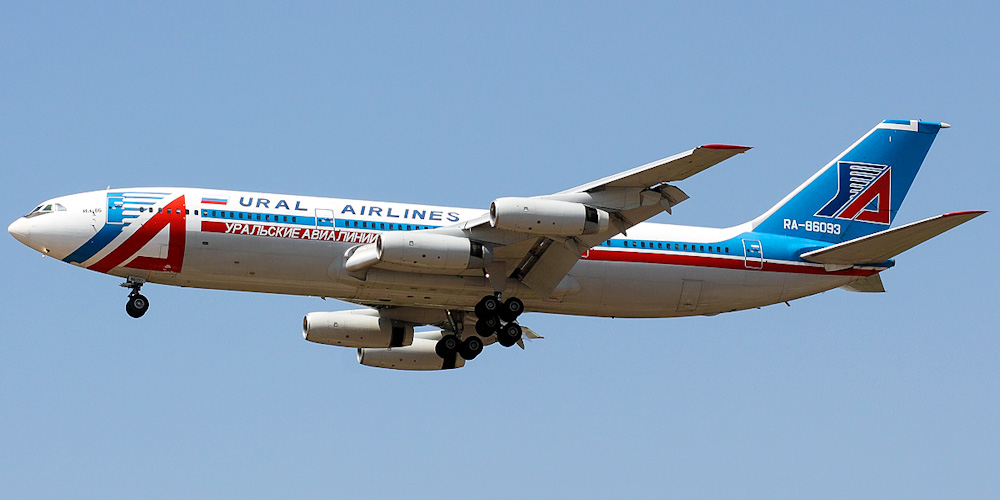
Il-96:
The Ilyushin Il-96 is a Russian four-engined jet long-haul wide-body airliner designed by Ilyushin in the former Soviet Union and manufactured by the Voronezh Aircraft Production Association in Voronezh, Russia. It is powered by four high-bypass Aviadvigatel PS-90 twin-spool turbofan engines. As of 2025, the Il-96 is used as the main Russian presidential aircraft.
General information:- Capacity: 237 - 436
- Length: 55.35 - 63.93m
- Width: 60.12m
- Largest weight: 250 - 270 tons
- Continuation: 9700 - 11482 km
- Number build: 33(till 2023)
- Production status: in production, but only a few in service
- Level: Wide-body large-sized passenger aircraft.
- Model: 3
Sukhoi(Russia):
SSJ-100:
The SSJ-100 , is a regional jet originally designed by the now-merged Russian aircraft company Sukhoi Civil Aircraft, a division of the United Aircraft Corporation (now: "Regional Aircraft" company branch). With development starting in 2000, it made its maiden flight on 19 May 2008 and its first commercial flight on 21 April 2011 with Armavia.
General information:- Capacity: 68 - 103
- Length: 26.44 - 29.94m
- Width: 27.8m
- Largest weight: 38.82 - 49.45 tons
- Continuation: 2900 - 4578 km
- Number build: 189(temperaly)
- Production status: in production
- Level: Narrow-body small to medium-sized passenger aircraft.
- Model: 4

Tupolev(Russia):
Tu-134:
The Tupolev Tu-134 is a twin-engined, narrow-body jet airliner built in the Soviet Union for short and medium-haul routes from 1966 to 1989. The original version featured a glazed-nose design and, like certain other Russian airliners (including its sister model, the Tu-154), it can operate from unpaved airfields.
General information:- Capacity: 72 - 84
- Length: 37.1m
- Width: 29.01m
- Largest weight: 47.6 tons
- Continuation: 1900 - 3000 km
- Number build: 854
- Production status: stopped, in limited use.
- Level: Narrow-body small-sized passenger aircraft.
Tu-154:
The Tupolev Tu-154 is a three-engined, medium-range, narrow-body airliner designed in the mid-1960s and manufactured by Tupolev. A workhorse of Soviet and Russian airlines for several decades, it carried half of all passengers flown by Aeroflot and its subsidiaries, remaining the standard domestic-route airliner of Russia and former Soviet states until the mid-2000s. It was exported to 17 non-Russian airlines and used as a head-of-state transport by the air forces of several countries.
General information:- Capacity: 114 - 180
- Length: 48m
- Width: 37.55m
- Largest weight: 98 - 104 tons
- Continuation: 2500 - 6600 km
- Number build: 1026
- Production status: stopped
- Level: Narrow-body medium-sized passenger aircraft
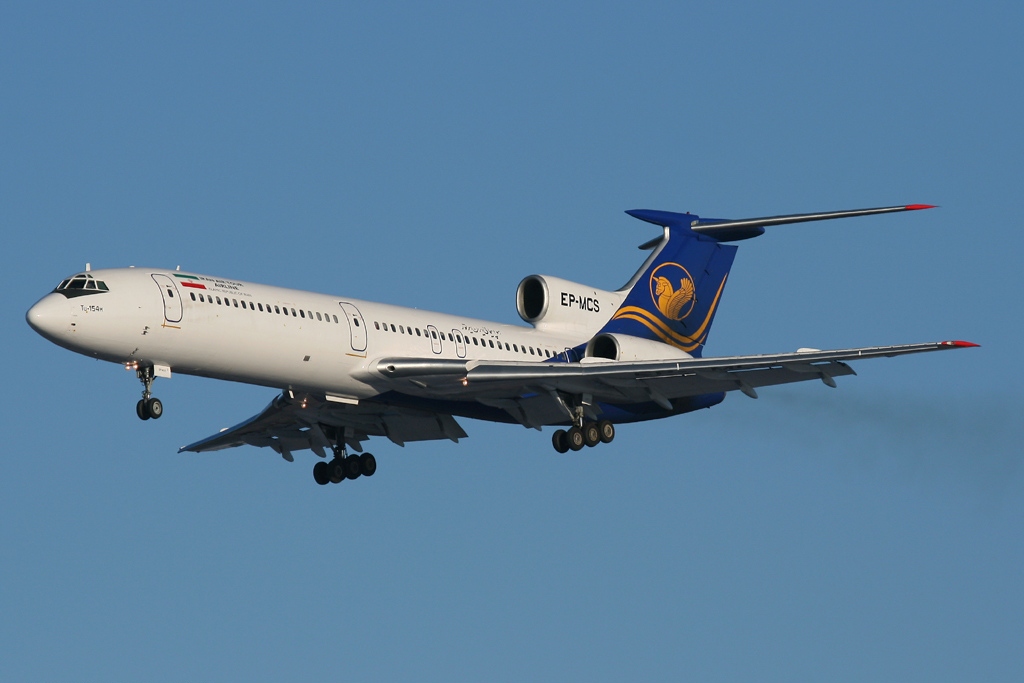
Tu-204(214):
The Tupolev Tu-204 is a twin-engined medium-range narrow-body jet airliner capable of carrying 210 passengers, designed by Tupolev and produced by Aviastar-SP and Kazan Aircraft Production Association. First introduced in 1995, it was intended to be broadly equivalent to the Boeing 757, with slightly lower range and payload, and had competitive performance and fuel efficiency in its class.
General information:- Capacity: 142 - 210
- Length: 46.14 - 40.19m
- Width:41.8m
- Largest weight: 103 - 110.75 tons
- Continuation: 4100 - 5800 km
- Number build: 89
- Production status: in production
- Level: Narrow-body large-sized passenger aircraft

Yakovlev(Russia):
Yak-42:
The Yakovlev Yak-42 is a 100/120-seat three-engined mid-range passenger jet developed in the mid 1970s to replace the obsolete Tupolev Tu-134. It was the first airliner produced in the Soviet Union to be powered by modern high-bypass turbofan engines.
General information:- Capacity: 104 - 120
- Length: 36.38m
- Width: 34.88m
- Largest weight: 57.5 tons
- Continuation: 4000 km
- Number build: 187
- Production status: Retiring
- Level: Narrow body small to medium-sized passenger aircraft.
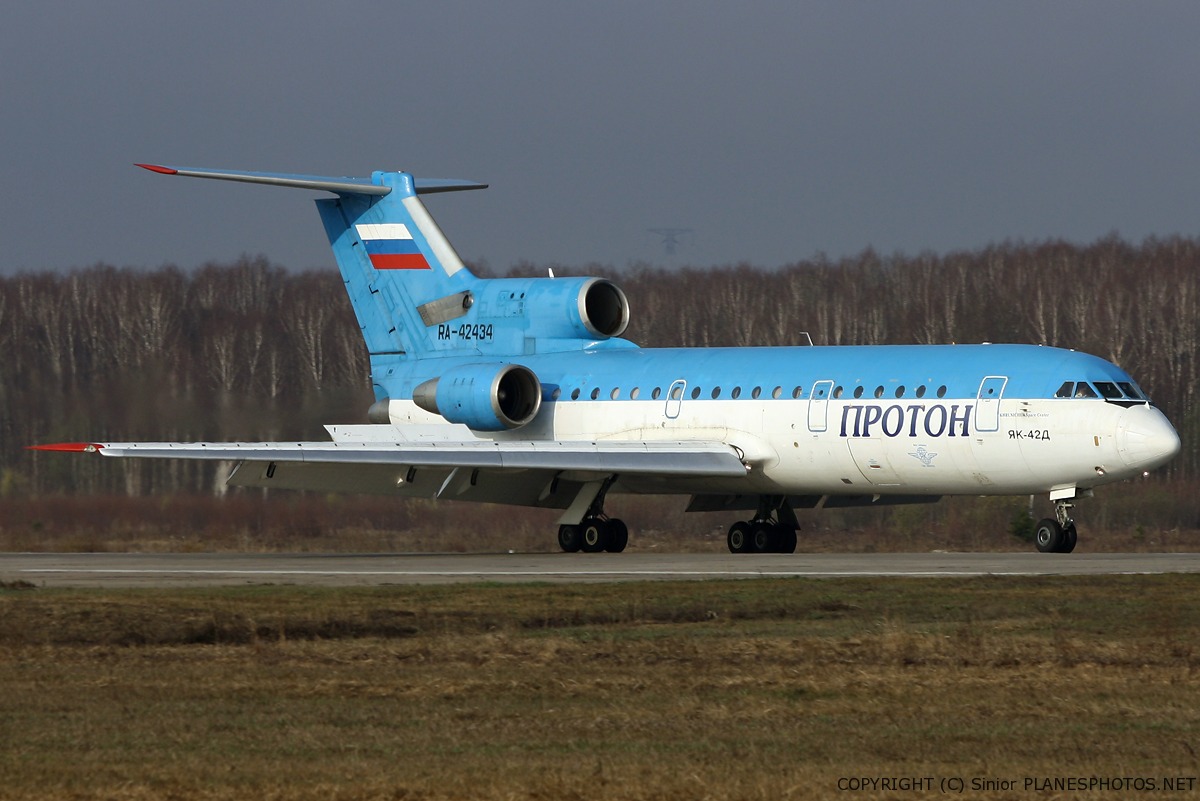
MC-21:
The Yakovlev MC-21 is a single-aisle airliner, under development in Russia by the Yakovlev Corporation (formerly known as Irkut Corporation), The variant MC-21-310 of the airliner powered by the Russian-made Aviadvigatel PD-14 engine made its maiden flight on 15 December 2020 from Irkutsk.
General information:- Capacity: 132 - 230
- Length: 36.8 - 46.7m
- Width: 35.9 - 36.8m
- Largest weight: 72.32 - 87.23 tons
- Continuation: 5500 - 6000 km
- Number build: 5-6
- Production status: in production, also under development
- Level: Narrow-body large-sized passenger aircraft.
- Model: 3
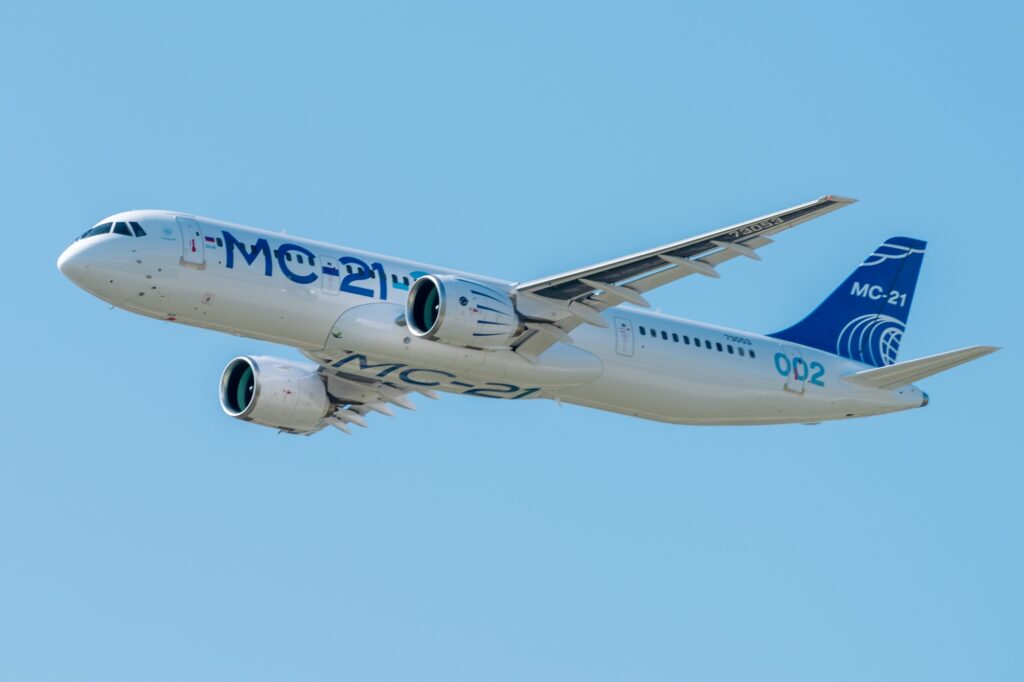
Bombardier(Canada):
DHC-8(or Dash 8):
The De Havilland Canada DHC-8, commonly known as the Dash 8, is a series of turboprop-powered regional airliners, introduced by de Havilland Canada (DHC) in 1984. DHC was bought by Boeing in 1986, then by Bombardier in 1992, then by Longview Aviation Capital in 2019; Longview revived the De Havilland Canada brand, now belonging to Viking.
General information:- Capacity: 37 - 70
- Length: 22.25 - 32.81m
- Width: 25.89 - 28.4m
- Largest weight: 16.47 - 29.26 tons
- Continuation: 1558 - 2522 km
- Number build: 1200 - 1250
- Production status: stopped, in service
- Level: Narrow body small-sized passenger aircraft.
- Model: 4
CRJ Family(Now belongs to Mitsubishi):
The Bombardier CRJ/Mitsubishi CRJ or CRJ Series is a family of regional jets introduced in 1991 by Bombardier Aerospace. The CRJ was manufactured by Bombardier Aerospace with the manufacturing of the first CRJ generation, the CRJ100/200 starting in 1991 and the second CRJ generation, the CRJ700 series starting in 1999.
General information:- Capacity: 50 - 100
- Length: 26.77 - 39.13m
- Width: 21.21 - 26.18m
- Largest weight: 24.091 - 40.824 tons
- Continuation: 2491 - 3713 km
- Number build: 1945
- Production: stopped, in service
- Level: Narrow-body small-sized passenger aircraft.
- Model: 6
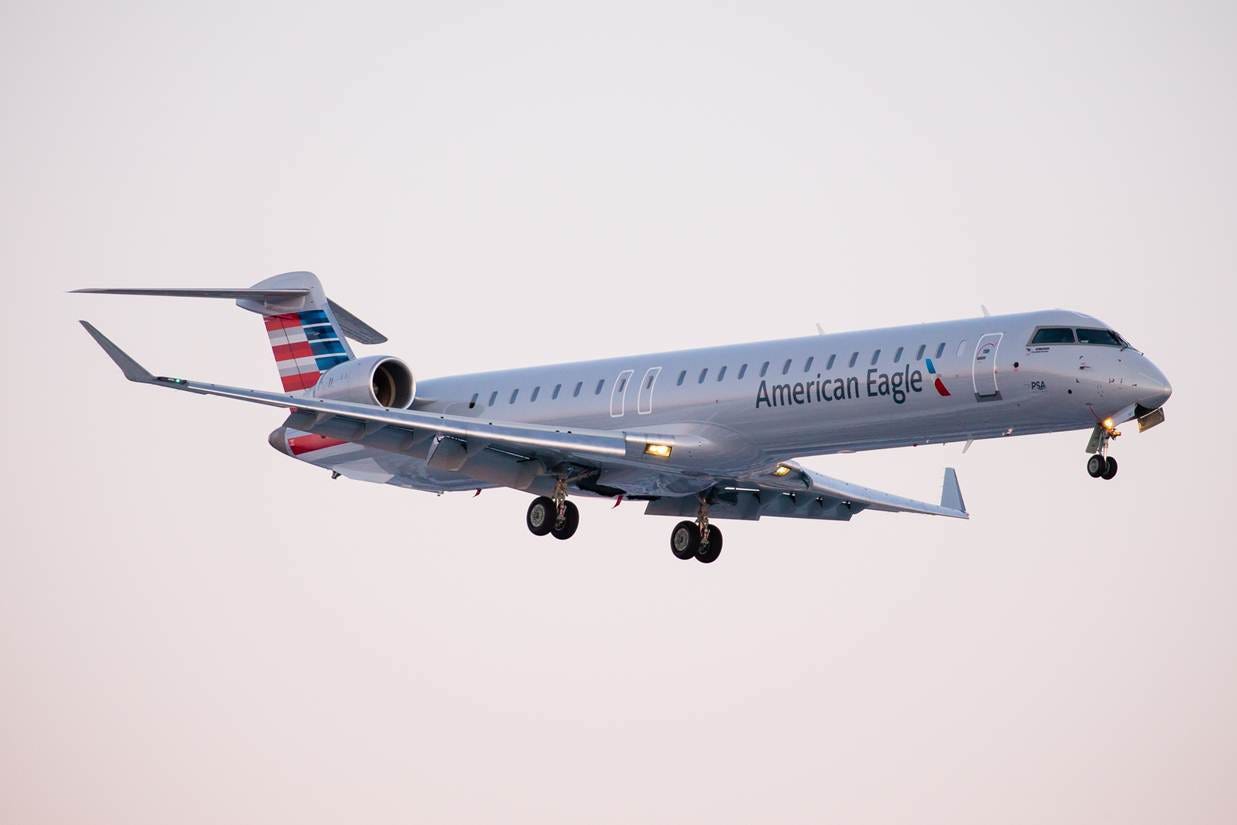
A220 used to belong to Bombardier.